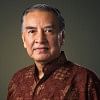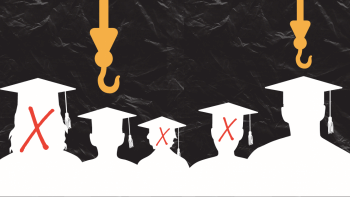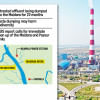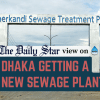Of rivers and people

Ever since my student days in the late 60s and early 70s, and later throughout my 52 years in journalism, I have tried to analyse our development strategies and understand how our experts planned our future. It does not require too much thinking to realise that our two biggest assets are our people and rivers. I always wondered why our planners did not use them as the centrepiece of all their thinking and planning.
If we look at our map, it becomes obvious how widespread our river network is and how amazingly it reaches every nook and corner of the country. It is almost like the network of arteries through which oxygen-rich blood flows to every part of the body to keep us alive and healthy.
Just imagine what we could have done with our rivers. Every part of Bangladesh could have had easy access in terms of transport of people, goods and services. Transportation could have been cheap, dependable and democratic as all strata of our population could access them. What's more, given the climate crisis, we could have made it an environment-friendly transport system. Rivers are our nature-gifted infrastructure of communication. Of course, we need roads, but building a communication network through rivers could have made a most attractive, productive and pro-poor alternative.
Instead, what we have done with our rivers has been unthinking, destructive, and near suicidal. We never adequately valued them, nor did we develop any comprehensive plan that would integrate them with our overall development strategy. We never even performed the most rudimentary functions to maintain them. We never dredged them adequately. So, over the years, silt and sediments accumulated and raised our riverbeds and clogged the water flow. In addition, we built dams, culverts, sluice gates and elevated roads without adequate planning to maintain the water flow, and on occasions diverting them in ways that harmed our rivers.
Then we poured poison into them. All city sewers went into them. But what was disastrous was the dumping of poisonous industrial waste into the rivers. Just imagine: millions of tonnes of poison-laden waste were released into our beautiful, life-giving, food-supplying rivers ceaselessly for years. To put it bluntly, we killed our rivers.
The number of rivers in Bangladesh was originally estimated to be around 1,200. Later, the figure was revised to about 700, and now the official estimate is 405. The National River Conservation Commission, however, says the number is 907. The ones that are still around, in spite of our neglect, are so polluted that, in some, even bacteria cannot survive. We have made our process of industrialisation fundamentally anti-nature. This cannot be sustained. We are jeopardising our own future.
Our other story of neglect is of our people. Our biggest asset—our human resource, especially the youth. We all know that we are among the most densely populated countries in the world. We could have also become a highly productive country if we had educated this population, trained them with appropriate skills, and equipped them with the right technological tools. Instead, we played with the future of our youth.
From the moment in human history when humans became surplus producers, we started accumulating wealth. As we became divided into nations and formed our own separate countries, the wealth of each country depended on how productive its citizens were. With the Industrial Revolution, productivity reached new levels and technologically advanced countries became rich. All these lessons are right in front of us.
Instead of educating our people for the 21st century, we left them unskilled, so they remained unprepared to navigate the world of artificial intelligence, and were forced to opt for the lower-level unskilled jobs when seeking employment abroad. How could we not have spent more on education and healthcare, and equip our people with greater skills and entrepreneurship to bring home the unimaginable opportunities that the modern world has to offer? How could we have missed the point that the present is a world of ideas? Yes, infrastructure is needed, but creativity is needed much more. How could we have not seen that some of the world's biggest conglomerates are mere products of ideas—Google, Amazon, Uber, Airbnb, Microsoft, etc? Even Apple, which builds some of the most amazing phones, is driven by ideas.
I have often wondered about what we have done, in the 53 years of our independent existence, in the field of education. We have had several education commissions since 1971. What were their outcomes? The Qudrat-i-Khuda Education Commission, established in 1972, aimed to establish a new education system to meet the needs of the new nation moving away from its colonial past as well as the Pakistani version of it. There was no shortage of education commissions: Mofizuddin Ahmed Commission in 1987; Shamsul Huque Commission in 1997; National Education Policy Formulation Committee in 2000; and Kabir Chowdhury Commission in 2009.
Except for the first, no other education commission acquired the needed prestige and clout to have any impact. Some significant political changes occurred which had their own impact on the commissions' findings and their subsequent implementation.
Like everything else in Bangladesh, education is a highly politicised affair. Each regime has tried to impose its own political philosophies and views on the students through control and change in school curricula. As the Awami League was the longest-serving party in government, it did the maximum damage. One of the political aims of the AL regime was to show that during its tenure, students were better educated than before. Hence, emphasis came on the quantity rather than quality, with larger and larger numbers of students being shown as passed in public examinations. Quality and learning discipline were largely abandoned.
Later, when it became evident that passing an exam was losing all meaning and that students at the college and university levels couldn't take the burden of higher learning, quality began to receive increased attention. By then, much ground was lost.
Coming back to our planning for the future, we urge the present leadership to finally put emphasis on the two assets—rivers and people—that can be our passport for a sustainable and prosperous future. Given all the uncertainties that the world now faces, having well-educated, appropriately skilled and sufficiently trained human resources will be the most appropriate development policy to follow.
So here we are, facing an ever-changing world, technological innovation of unimaginable potential, social transformation of unpredictable consequences, and a future of unknown—and in many ways unknowable—realities with a population totally unprepared to deal with the impact.
As we celebrate the new opportunities opened up by the recent student-led people's uprising, we must, with utmost urgency, start focusing on the future. The two assets referred to above are our best options.
Mahfuz Anam is the editor and publisher of The Daily Star.
Follow The Daily Star Opinion on Facebook for the latest opinions, commentaries and analyses by experts and professionals. To contribute your article or letter to The Daily Star Opinion, see our guidelines for submission.

 For all latest news, follow The Daily Star's Google News channel.
For all latest news, follow The Daily Star's Google News channel. 












Comments